Index
Geforce GTX 480 is a dual-slot card, which is common with high end cards, but it is not quite common seeing a reference card with a heatpipe solution. You’ll notice that in an effort to deliver thermals that would satisfy the GTX 480’s hot ticker, most of the card’s “hood” is actually the heatsink itself and plastic is there mostly for purposes of making sure the heat leaves the case via air outlets on the I/O panel, and that cooler blows towards the heatsink.
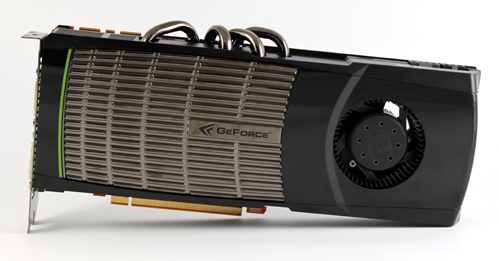
A glance at Geforce GTX 480 would suggest that the card comes with 4 heatpipes, although the card packs 5 in total, as is evident from the picture where we took the plastic hood off. We must admit it looks great with the chrome look and it sure looks like it has what it takes to dissipate heat from the GF100 GPU. GTX 480 has TDP of 250W (at idle consumes about 55W) and it needs external power via one 8-pin and one 6-pin connector. Recommended PSU for the GTX 480 is 600W whereas for GTX 470 Nvidia recommends a 550W PSU (GTX 470 has TDP od 215W).
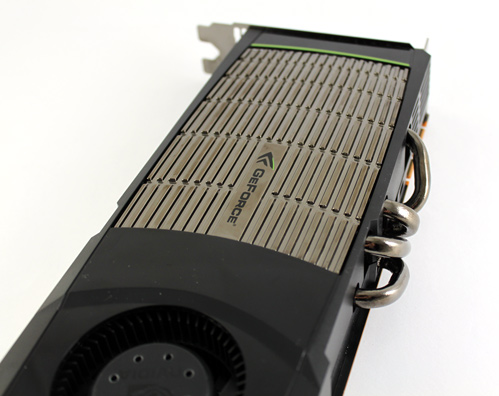
The fan looks much like the one on the current high end Radeon cards, and it can be very loud when GPU is hot. We measured about 65°C in idle mode and about 92°C in 3D with peak at 97°C.

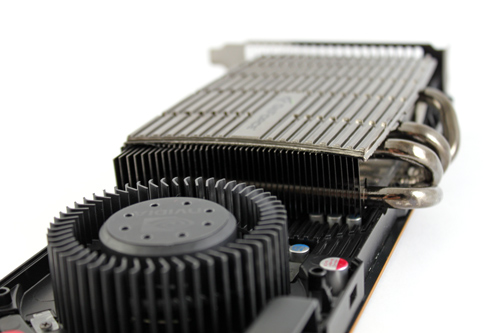
Nvidia was pretty conservative with usage of plastics, as the GTX 480's hood is basically a light frame with big holes in the middle where the heatsink and the fan are placed.
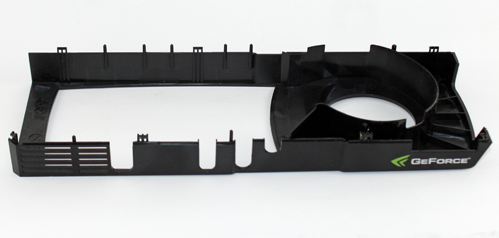
All the power components are cooled by the fan and passive heatsink, as you can see from the following picture. Nvidia is using a Delta fan, which is rated at 1.8 A.
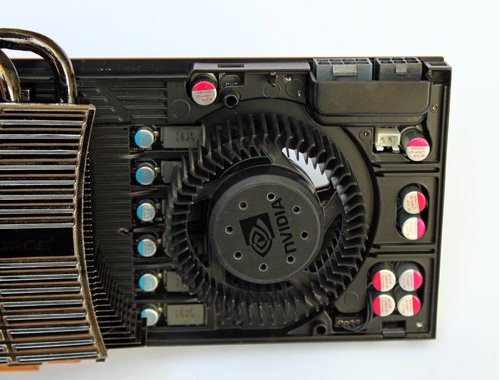
Nvidia resorted to using the same trick they used on the dual-GPU GTX 295 for air supply - this card features a hole in the PCB behind the fan as well. There's also an air outlet on the I/O panel and it's similar to that on the GTX 285.
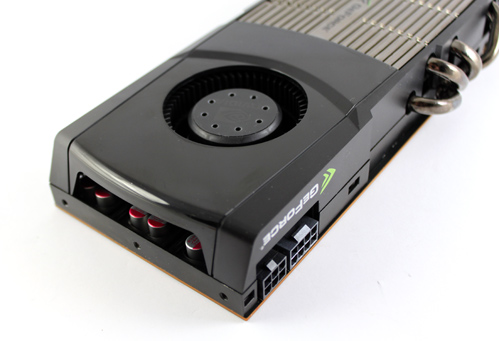
Power connectors are located on the top of the card.
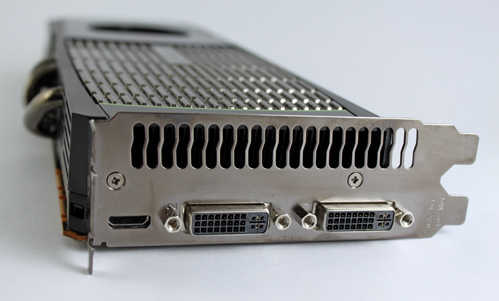
The I/O panel features two standard dual link DVI outs as well as one miniHDMI. Despite the card supporting DisplayPort, Nvidia thought more users will need HDMI, so DisplayPort implementation will be up to partners. GF100 support HDMI 1.4 and everything that's needed in regards to 3D TV etc.
In case you're looking to use three displays with Nvidia 3D Vision technology, you'll have to reach further into your pockets for another card as one card will allow for two displays only.
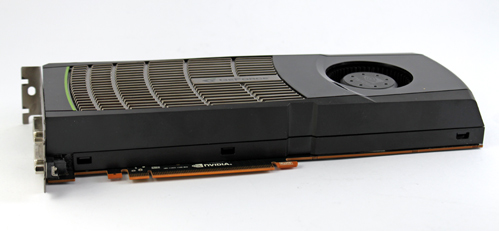
Unlike the GTX 285's cooler, the GTX 480's cooler is pretty easy to disassemble, which will make mounting water cooling easy. If you think that watercooling is overkill in this case, note that three GTX 480 cards get so hot that triple SLI is not advised with air cooling alone.
